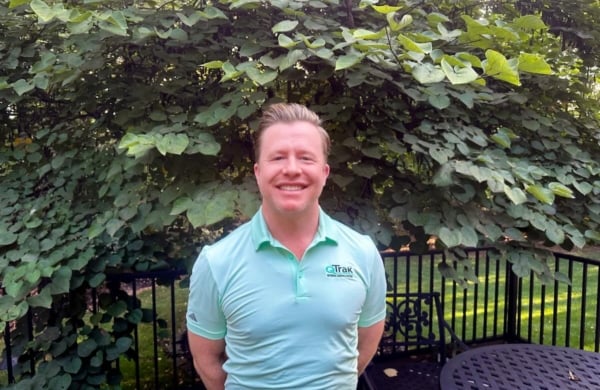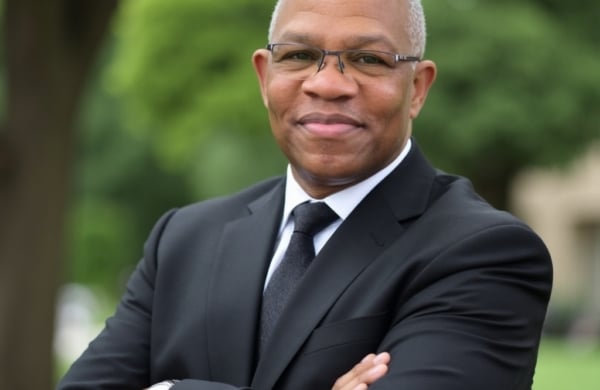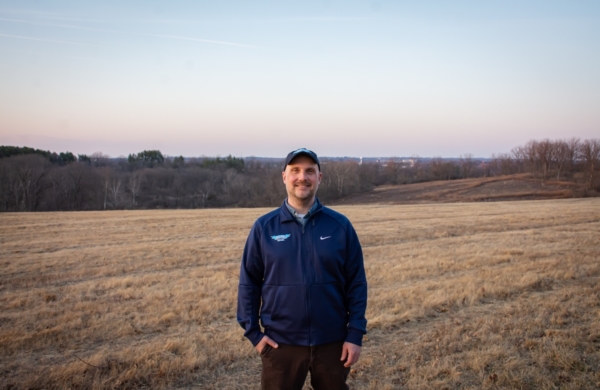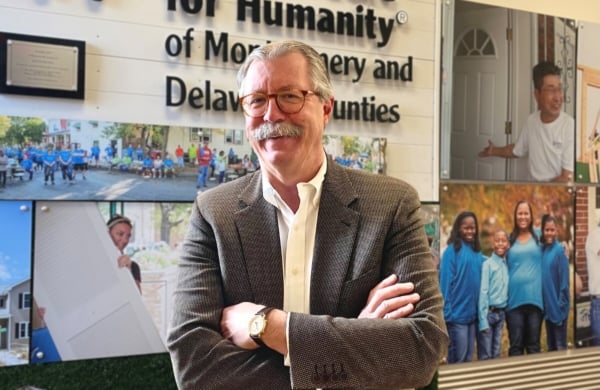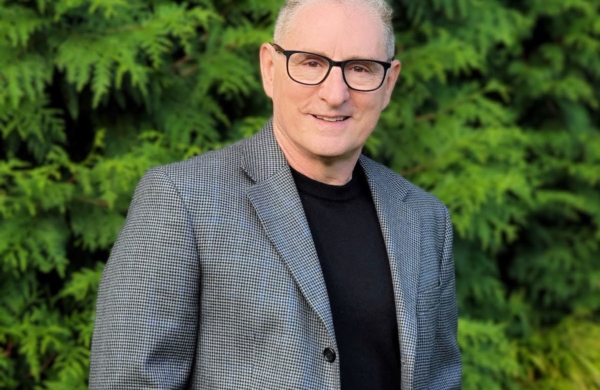KOP Insiders: Dr. Michael Fishman, MD, MBA

KOP Insiders delves into the stories of the people who make King of Prussia one of Pennsylvania’s most dynamic live-work-play-stay destinations.
In depth interviews provide insight into the companies that make up our diverse business community and put a face to the individuals behind the business. In this edition, we are joined by Dr. Michael Fishman, MD, MBA.
Can you explain a bit about your medical journey, and how you ended up practicing in the area?
I’ve been practicing for about 10 years in the area. When I first came out of fellowship from Stanford, I joined a practice that was based in two sites in Delaware, as well as Bryn Mawr, Exton, Horsham and Fort Washington. One of the things I did while I was there was help move our offices and expand our surgical centers more toward Central Pennsylvania. After eight or nine years with that group, I decided to start my own practice. I have kind of a hybrid practice, and it’s been an interesting career.
For the first 10 years, I did a lot of clinical research, wrote a lot of papers and conducted studies with device companies. I also designed and executed my own clinical trials. Through that work, I became a consultant to a variety of companies and ultimately became the Chief Medical Officer for a company called Brixton Biosciences, based in Cambridge, Massachusetts. Right now, two days a week, I serve as the Chief Medical Officer for Brixton. We’re commercializing injectable ice, which is a really interesting product that we hope will replace a variety of different treatments people currently use—initially for knee pain, but ultimately for pain from osteoarthritis.
Injectable ice? How does that work?
It’s a frozen slurry. We call it Neural Ice, and we inject it around sensory nerves that go into joints. It actually dissolves the myelin—the sheath of those peripheral nerves—selectively because of the temperature we’re using.
This came from the same lab at Massachusetts General Hospital that developed CoolSculpting, which has been used in millions of people. That same lab noticed certain thermal effects on peripheral nerves and did a variety of basic science work in animals to understand if we could reproduce this effect. To deliver it to humans, we developed a technology that allows us to inject ice through a needle.
I do that two days a week, but I’ve always used my clinic as inspiration. I’m never not going to be clinically active, but now I have the flexibility to provide interventional pain care—both diagnostic and therapeutic—as well as interventional mental health services to the community. There’s a lot of crossover between these disciplines.
Interesting! You have had practices all around the PA area, but what stands out about the KOP area?
Location is huge. KOP is central for a lot of reasons. I can speak to that, having practiced all over southeastern and central Pennsylvania. It’s a hub for a much broader region than Philadelphia is, for example. If you think about the Turnpike as a conduit—even my patients from Lebanon, Pennsylvania, which is about 70 miles from Philadelphia—going to King of Prussia is no big deal. If I asked them to come into Philadelphia for surgery or to see a specialist, there’s friction. But KOP? Even from as far out as Lancaster or Harrisburg, King of Prussia is much more approachable. The same goes for the North and South—it’s just centrally located, right off the Turnpike. And everything is here. KOP is a destination. There’s an incredible number of amenities, and there’s really something for everybody.
Of course, there’s nothing better than being close to home. But I think when people realize they have a number of resources all in one location, they take advantage of it. And it also lends credibility to the medical institutions. I mean, if you’re in King of Prussia—this is high-value real estate. This is a place with notoriety for a variety of reasons. In my experience, it’s on par with sending someone into the big city for their evaluation. That’s reinforced by the fact that many of the physicians you see in King of Prussia are the same ones you’d see downtown in the big hospitals. But this is much more approachable—easier to park, easier to navigate and just easier for a suburbanite to access care.
Can you talk a bit about why you selected MedCoShare for your KOP practice?
MedCoShare made the most sense for me as an independent practitioner with a very niche practice. When I say niche, I mean that I offer things and perform procedures that a lot of people don’t across Central Pennsylvania and Southeastern Pennsylvania. I also think about things in a way that has turned me into a sort of tertiary or quaternary referral source. I see people after they’ve already seen three, four, sometimes five pain doctors. It makes sense to have a regional hub location, and MedCoShare makes that really simple. Also, a lot of what I do involves taking care of injured workers, especially in King of Prussia. One of the things we see is how easy that is logistically—we’re right down the hall at MedCoShare from Concentra, another major King of Prussia employer. Concentra is one of the most prolific occupational medicine facilities, so it’s a very collaborative environment inside MedCoShare, but also inside the building and the broader community here.
For a lot of people who have been in this world for a while—either as a patient or as a physician—there’s a fair amount of frustration with big medicine. That’s not to say that the resources I just described, like the large health systems and their outposts in King of Prussia, aren’t valuable or aren’t increasing access to important care. But I practice small medicine, and I’ve recognized how important that is to the community.
What would you say makes your practice and treatment unique?
Especially when it comes to interventional pain care, I take the time to review everybody’s MRI with them. They can see their own pictures. I save them screenshots, I print them out, I let them video it. If you don’t understand your MRI by looking at the pictures, I probably haven’t done my whole job. Unfortunately, I see a lot of patients who come in with just the MRI report. Sometimes there are things circled on it—maybe they circled them themselves, but often that’s what they were handed by their physician: just the report. And they’re told, “This is what you have, and these are the injections or procedures we do.”
But for what I do and the patients I see, I can tell you that the radiologist’s report—without looking at the actual images—is often insufficient. It’s hard to interpret an image without the person in front of you, without being able to examine them and put all the pieces together. What I do is all of that. That’s what a comprehensive evaluation is. I see a lot of patients, and if there’s anything I think I do really well, it’s that I teach you your imaging. I help you understand what your actual problems are so you can connect that with the symptoms you may be experiencing. And for some people, that alone is worth the visit. I don’t always have a solution—it’s not that simple, especially for something like pain, which can have so many root causes.
Do you have any goals for your practice over the next five or ten years?
I want to really expand what I would call patient-directed care. What I want to do is select patients based on the problem they have and be a destination for patients because of their problem. They’re not looking to see Dr. Fishman—they’re looking for a center that focuses on diabetic neuropathy, blocking long COVID or lowering back pain through restorative stimulation.
Through my practice, kind of as an incubator if you will, I’m developing a few websites that are really patient-specific: diabeticneuropathy.com, loweryourbackpain.com, blocklongcovid.com. These are going to be used to directly market to patients with specific solutions, and we’re going to have specific selection criteria. I know there’s a lot of waste in medicine. I have found that for specific problems—like diabetic neuropathy, back pain and long COVID—my algorithms are effective. If I can get the patients I want to see, the ones I think I can help and do the best job with, I could help and impact the most patients.
I’m not creating a kind of churning type of practice. Many pain management practices are really just doing the same injections over and over for years and years. There have been advancements in the space, but they’ve not always been widely adopted. I take a different philosophy. And that’s where a destination like King of Prussia comes into play. For the catchment area and the patients I want to attract, you definitely need a regional hub where you can draw patients from a much larger area. King of Prussia, I would say, has a true 70-to-80-mile radius where people actively go there. For me to start experimenting with the direct-to-patient marketing that I’m hoping will be successful in bringing patients to treatments that are effective, I needed a regional hub.
What advice would you give to another doctor who was thinking of starting a practice in the KOP area?
For me, the independence of being able to work in a collaborative environment with other specialists, like MedCoShare, but also being independent outside the restraints and red tape of large health systems, allows me to practice medicine the way I’d like to. It helps me be flexible in treating injured workers and treating patients outside the box. I don’t feel that I have to do anything from a production standpoint. Rather, I can offer people what I believe is their best care path, and sometimes that’s just understanding their condition. That’s my philosophy.
At the end of the day, the reason why King of Prussia is so good is because it is a land of prosperity. There is incredibly high-quality care delivered here. If you’re a physician and you want to open up your own shingle shack, which is what I did, having a location in King of Prussia elevates your brand. And if you want to work for a big hospital or one of those places, then this is a central hub, and they have an incredible facility for you. I’m always going to be marketing for the independent physicians, but I’ve found in general that the medical care you’ll get in the KOP area is world class.
Is there anything you like to do in KOP in your free time?
I really like Town Center, especially with the kids. They have a lot of outdoor activities on weekends and in the summer. Just going Town Center and letting the kids run around and play is often a nice break. I’m not the biggest mall person, but I actually like the King of Prussia Mall because it doesn’t feel too mall-like.
This place really has something for everyone. I also really like Savona, and I’m a big fan of Creeds. Oh, and Founding Farmers with the kettle corn and brunch—that brunch is amazing.
Well thank you so much, Dr. Fishman. Is there anything else you wanted to say about your practice in KOP?
At the end of the day, my goal is to help you restore your function and improve your life. I don’t necessarily have to reduce your pain, but I need to make you better. What does being better mean? What is better to you? What is happy to you? It depends.
I’m somebody who listens, and I’m going to give you a tailored treatment plan and you’re going to understand your diagnosis.
About Dr. Michael Fishman
Dr. Fishman is a double board-certified anesthesiologist and interventional pain specialist dedicated to accurately diagnosing and treating chronic pain. Known for his fresh perspective on complex cases, he develops personalized, innovative treatment plans that go beyond conventional approaches and lead to lasting relief.
Dr. Michael Fishman
KOP MedCoShare Location
170 N Henderson Rd # 310, King of Prussia, PA 19406
www.doctorfishman.com
